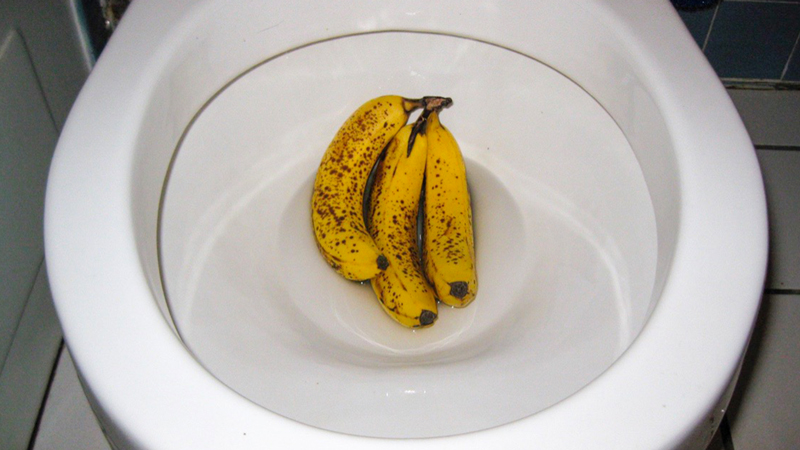Is it Permitted to Dispose of Food in the Toilet?
Is it Permitted to Dispose of Food in the Toilet?
Blog Article
How do you feel in regards to Is it safe to flush food (especially rice) down the toilet??

Intro
Lots of people are often faced with the predicament of what to do with food waste, particularly when it involves leftovers or scraps. One common concern that arises is whether it's all right to flush food down the toilet. In this write-up, we'll explore the reasons that individuals might take into consideration purging food, the effects of doing so, and alternative methods for appropriate disposal.
Reasons that people could think about purging food
Lack of awareness
Some people may not know the prospective harm triggered by purging food down the commode. They might wrongly think that it's a safe practice.
Convenience
Purging food down the bathroom may appear like a quick and easy option to getting rid of undesirable scraps, especially when there's no close-by trash bin available.
Idleness
In many cases, individuals might just choose to flush food out of large idleness, without thinking about the repercussions of their actions.
Effects of flushing food down the bathroom
Environmental influence
Food waste that winds up in waterways can add to contamination and harm marine ecological communities. Furthermore, the water used to purge food can strain water sources.
Plumbing concerns
Flushing food can bring about stopped up pipes and drains pipes, causing pricey plumbing repair services and hassles.
Sorts of food that ought to not be purged
Fibrous foods
Foods with fibrous appearances such as celery or corn husks can get entangled in pipelines and trigger obstructions.
Starchy foods
Starchy foods like pasta and rice can absorb water and swell, bring about blockages in pipes.
Oils and fats
Greasy foods like bacon or food preparation oils should never be purged down the commode as they can solidify and trigger obstructions.
Correct disposal methods for food waste
Utilizing a waste disposal unit
For homes equipped with garbage disposals, food scraps can be ground up and purged via the pipes system. Nonetheless, not all foods are suitable for disposal in this manner.
Recycling
Specific food product packaging products can be reused, lowering waste and minimizing environmental impact.
Composting
Composting is an environment-friendly method to dispose of food waste. Organic materials can be composted and used to enrich soil for gardening.
The relevance of proper waste monitoring
Reducing ecological harm
Proper waste monitoring practices, such as composting and recycling, assistance decrease pollution and maintain natural resources for future generations.
Protecting pipes systems
By preventing the technique of flushing food down the bathroom, home owners can protect against pricey plumbing repair work and maintain the integrity of their plumbing systems.
Final thought
To conclude, while it may be alluring to flush food down the commode for convenience, it's important to recognize the prospective consequences of this activity. By embracing correct waste administration practices and dealing with food waste responsibly, people can add to much healthier plumbing systems and a cleaner atmosphere for all.
THINK TWICE BEFORE FLUSHING FOOD DOWN YOUR TOILET IN FALLBROOK CA
Let’s be honest, we’re really supposed to be tossing rotten or leftover food in the compost bin or trash can. But many people like to place scraps of food down the drain of, say, their kitchen sink. That’s why the garbage disposal was invented: so we can continue to place certain foods down the drain without clogging our drain in the process. Smart.
But not all of us have the luxury of having a garbage disposal installed. So, you might continue to shove food down your sink drain anyway – or worse: you might flush them down your toilet! If you’re guilty of doing the latter, you’re going to want to stop, and here’s why:
Toilet Drains Aren’t Designed to Handle Food!
There’s your answer: food just doesn’t belong in your toilet. It may seem like your toilet drain is wider than the drains of your sinks, but truth be told, that isn’t actually the case. The narrower pipes of your toilet leave your plumbing at risk for clogging if you do happen to flush your food. In addition, food doesn’t break down as quickly that toilet paper and human waste do. In turn, this leaves your toilet at risk for a nasty clog.
Although a flush of a tiny pinch of food every now and then isn’t going to completely damage your toilet, there are certain foods that should absolutely not be flushed in your toilet at all. These include starchy foods like mashed potatoes, grains, hard pieces of food that are slow to break down, and fats and oils.
The latter categories of food are particularly problematic as they may harden, expand as they absorb water, break down slowly in your system, or generally create the perfect obstruction with their gelatinous composition. These are all things you don’t want in your plumbing system!
Experiencing a Toilet Clog?
Nobody’s perfect, and we all make mistakes. Sometimes one of the mistakes people make is flushing food down their toilet and later realizing that it wasn’t the best thing to do once they see that their toilet is now clogged. Uh-oh!

Hopefully you enjoyed reading our excerpt about . Thanks for taking the time to browse our content. Sharing is good. Helping people is fun. Thank you for your time. Come back soon.
Call Today Report this page